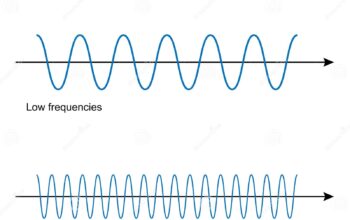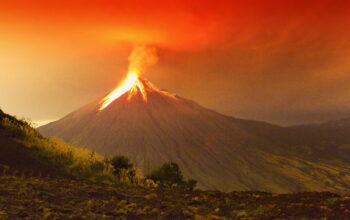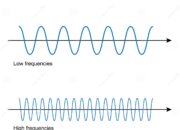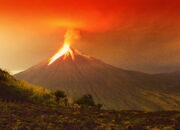Comets have long captured the curiosity of astronomers and laypeople alike, often regarded as celestial harbingers of change or omens of significant events on Earth. Their ephemeral presence in the night sky provokes a sense of wonder, yet beneath this facade lies a plethora of scientific intrigue. Recently, the collision of a comet with another celestial body has afforded researchers an unprecedented glimpse into the primordial components that shaped our solar system. This event not only serves as a nexus for scientific inquiry but also illustrates the fascinating interplay between cosmic phenomena and planetary evolution.
The significance of the comet collision cannot be overstated, as it reveals vital information about the building blocks of our solar system. Comets are, in essence, time capsules, preserving the chemical signatures and structures from the nascent years of planetary formation. Comprised primarily of ice, dust, and other primordial materials, these bodies have remained largely unaltered since their inception, making them invaluable for understanding the conditions that prevailed in the early solar system.
Upon the impact event, which prompted a flurry of observational campaigns and subsequent data analysis, researchers witnessed a myriad of phenomena. The collision resulted in the ejection of debris and volatile compounds, providing a cornucopia of information regarding the comet’s composition. Isotopic analysis of the material revealed startling similarities with certain types of carbonaceous chondrites, thus reinforcing theories that comets may have played a pivotal role in the delivery of water and organic molecules to Earth during its formative eons. This perspective aligns with the burgeoning hypothesis that life on Earth may have extraterrestrial origins, underscoring the importance of these icy wanderers.
In addition to their roles in astrobiology, the study of comet collisions extends into the realm of planetary defense. The dynamics of these collisions offer insights into the trajectories and behaviors of comets, ultimately enabling scientists to develop predictive models concerning potential impacts with Earth. Given that these celestial bodies are remnants from the solar system’s infancy, their paths are influenced by gravitational interactions, solar radiation, and other forces that govern their orbits. By comprehensively understanding these dynamics, strategies can be devised to mitigate potential threats posed by hazardous objects.
The collision event serves as a stark reminder of the volatility of our cosmic neighborhood. In a chaotic ballet governed by gravity, celestial bodies often experience interactions that can lead to significant alterations in their trajectory and fate. The violent nature of such collisions not only fascinates scientists but also ties back to the broader narrative of the solar system’s evolution characterized by cataclysmic events and gradual formations. These concepts, often abstract, gain palpable visibility through the lens of cometary studies.
Moreover, the conceptual framework surrounding these cosmic events is crucial in comprehending the broader philosophy of space exploration. Humanity’s journey into the cosmos has continually been driven by the quest for knowledge. Investigating the aftermath of comet collisions feeds into this desire, revealing the intricate processes that govern the universe. It posits essential questions: What are the implications of such discoveries for our understanding of the origins of life? How do these findings reshape our conceptualization of planetary systems?
The color and brightness exhibited during the collision’s aftermath allowed astronomers to analyze the physical state of the expelled material. Advanced spectroscopic methods facilitated the deciphering of molecular compositions, unveiling the presence of complex hydrocarbons and other compounds previously hypothesized to exist within cometary nuclei. Such analyses have broader implications, suggesting that the prebiotic chemistry conducive to life may have been more common throughout the solar system than previously postulated.
Furthermore, the varying sizes and compositions of comets can yield critical information regarding the diversity of planetary systems beyond our own. By comparing the chemical signatures of comets with those detected in exoplanetary systems, scientists glean insights into the processes of formation and the potential for habitability in other galaxies. Understanding these cosmic relics helps construct a comprehensive narrative of planetary genesis and evolution, thereby contributing to the elucidation of our place in the universe.
The fascination with comet collisions transcends mere scientific curiosity; it encapsulates the human desire to understand our origins and the workings of the cosmos. As such events prompt profound questions about existence, our interconnectedness with the universe, and the processes that led to the creation of Earth and the life it harbors. Each collision adds a thread to the rich tapestry of cosmic history, revealing secrets that, while complex, resonate deeply with our existential inquiries.
In conclusion, the collision of comets serves as a crucial fulcrum for understanding both the mechanics of our solar system and the broader implications for life beyond Earth. This confluence of astrophysics, planetary science, and existential philosophy underscores the irresistible allure of celestial study. The wealth of knowledge derived from such events not only answers lingering questions but also poses new enigmas, ensuring that our fascination with the cosmos remains eternal. In essence, the debris of cosmic collisions is not merely space dust; it is a treasure trove of information, a testament to the dynamic history of the universe, and an emblem of humanity’s relentless quest for knowledge.












